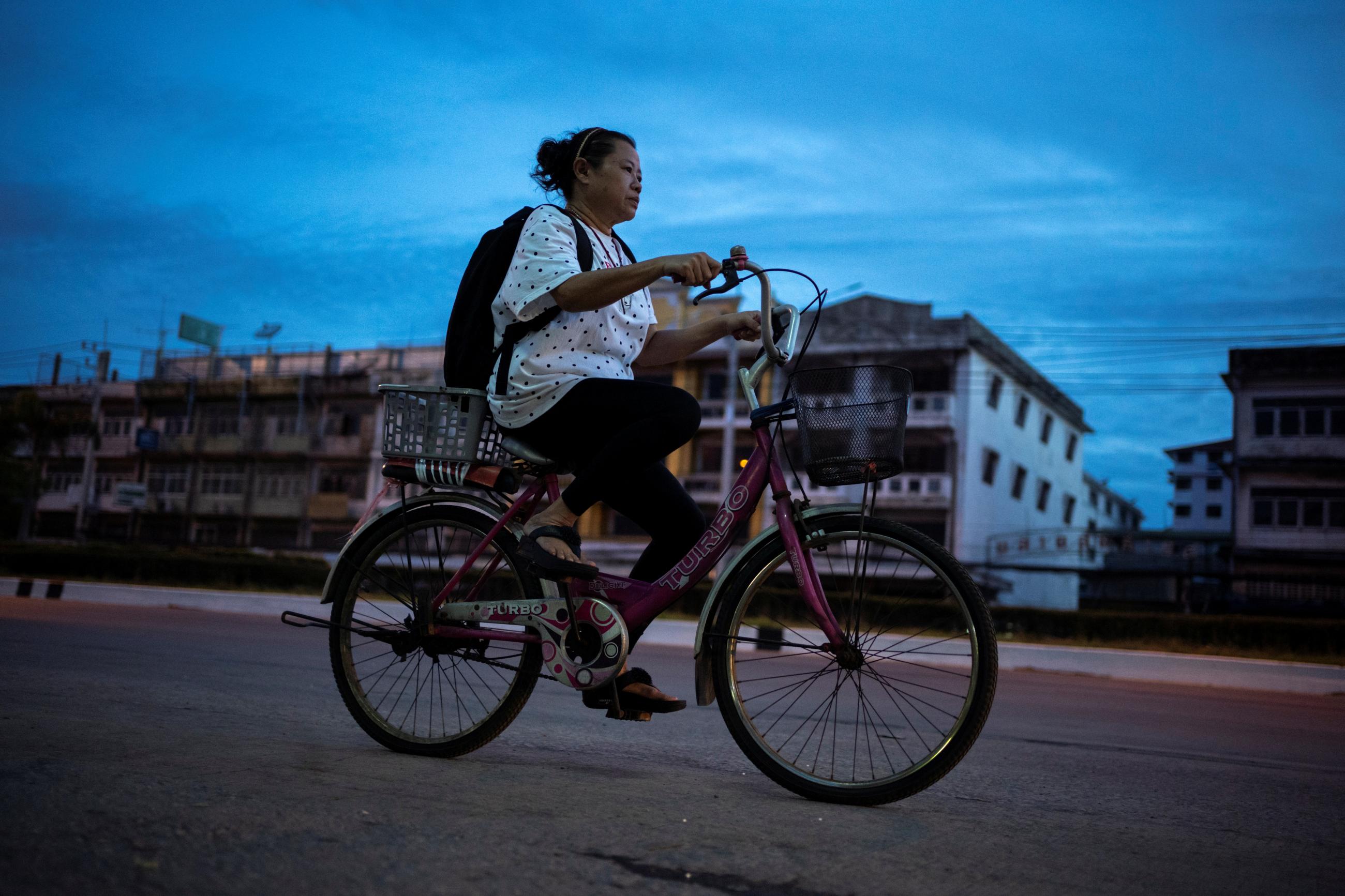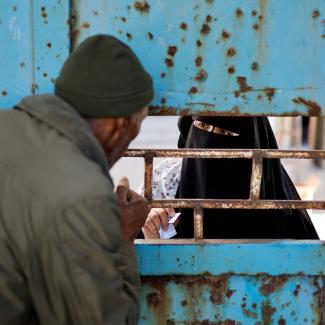From the 1918 influenza epidemic to the 2002-2004 SARS outbreak to the current COVID-19 crisis, pandemics have increased suicide rates and hospitalizations in some countries, especially among vulnerable populations. Until recently, however, there has been little research examining the link between global viral events and their short- and long-term effects on mental health.
As the pandemic wears on, death rates and suicide attempts have increased in some countries
The COVID-19 pandemic is exacerbating existing inequalities that especially affect at-risk communities and it is potentially widening existing health disparities for women. At the beginning of the pandemic, suicide rates did not spike, and, study results showed there was no significant increase in risk of suicide in any country or area. As the pandemic wears on, however, death rates and suicide attempts have increased in some countries. There are emerging patterns of suicidal behavior among women ages 15 to 49, related risk factors, and an increase in important research and prevention programs tailored for women.
As the pandemic unfolded and additional waves occurred, and as more detailed data became available, a picture has emerged in some countries. Broad trends at the national or state level often mask important differences and disparities by sex and by age. For example, findings from a study in Japan on longer-term effects on mental health, financial instability, and other risk factors, indicate monthly suicide rates increased by 16 percent during the second wave of the pandemic there (July to October 2020), with a larger increase among females (37 percent) as well as children and adolescents (49 percent). Suicides among women in their twenties in South Korea also increased by about 43 percent in the first half of 2020 while rates for men declined. In the United States, data gathered by the CDC from the National Syndromic Surveillance Program indicate that between February 2021 and March 2021 adolescent girls' average weekly hospitalizations for suspected suicide attempts increased by 51 percent compared to 2020. These alarming trends provide an opportunity to initiate open dialogue on suicide and how communities should address it.

At the beginning of the pandemic, women included in surveys from the Philippines and Bangladesh were found to have significant psychological impacts from the COVID-19 pandemic. The results of these studies found later increases in suicide attempts and completion between 2019 and 2020. In the Philippines, the psychological impact of the COVID-19 pandemic was found to be more severe among females than males. These results mirror findings from the Philippine Statistics Authority, which show a 57.3 percent increase in suicide from 2019 to 2020. In a systematic review conducted in Bangladesh, within the context of COVID-19, being female significantly increased the rate of suicidal behavior across all reviewed literature. In Bangladesh, women are more likely to display suicidal behavior compared to men. Similarly, a survey study conducted of the general population of Saudi Arabia—the majority of whom were women (64 percent) between the ages of 31 and 40 years (23 percent)—highlights that throughout the early stage of the COVID-19 outbreak in Saudi Arabia, nearly one-fourth of the sampled general population experienced a moderate to severe psychological impact. Due to the laws against suicide, this data is most likely underreported in Saudi Arabia.
According to the World Health Organization (WHO) and the Global Burden of Disease Study 2019 (GBD 2019), females are more susceptible to depression and anxiety disorders compared to males. This susceptibility starts even before age 15 and is linked to well-established risk factors for adolescent girls, including child sexual abuse, bullying, and other forms of maltreatment and violence.
In Japan, monthly suicide rates increased by 16 percent during the second wave of the pandemic
Self-inflicted injuries are a main cause of death worldwide in adolescent girls according to the Global Burden of Disease collaboration. And suicide is among the top ten causes of death globally among adult women ages 20 to 59. In 2019, suicide was the sixth most common cause of death globally among women ages 15 to 49. For women in the same age group within wealthy countries, suicide has been ranked the number one cause of death.
GBD 2019 estimates show that in 2019, suicide is a leading cause of death for girls and women between the ages of 15 to 44 globally. For girls between the ages of 15 to 19, suicide is the leading cause of death, while for women 20 to 24, it is the second leading cause. For women 25 to 34, it is the third leading cause. For women between the ages of 35 to 44, it remains in the top 10 causes of death.
Based on data availability and high-quality studies, research in high-income countries is made possible. In many low-, low-middle, and middle-income countries, suicide data goes unreported. A systematic literature review and meta-analysis in 2019 concluded that while 75 percent of the world's suicides occur in low- and middle-income countries, more high-quality research in these countries is needed to ensure effective intervention and appropriate allocation of resources.
Risk factors for suicide are complex and differ across borders, as well as racial and ethnic groups as a result of systemic racism and discrimination. The public health outcomes of self-harm and suicide among women ages 15 to 49—one of the world's highest at-risk groups—differ depending on underlying risk factors. Many communities around the world are putting in place strategies and solutions to stop suicide in this demographic and the broader population. But more research is needed, as well as opportunities for community-based involvement in suicide prevention. Risk factors for suicide include financial instability, unemployment, social isolation, mental disorders, abuse, family history of self-harm, and past suicide attempts. While the risk of suicide due to select mental disorders is higher in men on a global level, many risk factors, such as depression and past suicide attempts, affect women on a greater scale in some countries; however, this highlights the importance of investigating the different trends of suicide risks by sex. Frontline workers, older adults, people who are experiencing homelessness and migrants, victims of abuse and violence, stigmatized groups, and those affected by financial crisis are most at risk. In an analysis of 104 countries, women were found to make up an estimated 67 percent of the health-care workforce. In the United States, women make up 77 percent of frontline workers.
With a disproportionate number of low-wage and face-to-face jobs held by women, job loss and economic insecurity have had a significant effect on working women during the pandemic. For women in low-wage positions who did not suffer job loss due to lockdowns, they are often in frontline occupations or essential businesses—high stress roles. For those who have lost their jobs, feelings of social isolation often degrade mental health. These risk factors can compound and increase suicidal thoughts.
Communities can prevent suicide by talking more openly about mental health and holding mental resilience awareness campaigns
Research also indicates increased and intensified violence against women and girls against the backdrop of COVID-19. For instance, self-reported violence against women in Jordan quadrupled and domestic-violence police calls increased by 278 percent in China during the pandemic. Evidence shows that suicide attempts among females are strongly associated with experiences of violence.
Comparatively, less research has been done on the protective factors ("the characteristics that make it less likely for individuals to consider, attempt, or die by suicide") than the risk factors. Nevertheless, the existing body of knowledge suggests that understanding both is important for strategic planning of prevention and interventions. Major internal/personal and external/environmental/psycho-social protective factors for suicide include life skills (problem solving skills, coping skills, ability to adapt to change), connectedness, and effective mental health care.
A study conducted comparing four countries actively implementing national suicide prevention programs with four countries without such programming over the course of thirty years confirms that national suicide prevention programs are effective in reducing suicide rates for the age groups discussed here. There are twenty-eight countries who currently have a national suicide prevention program. Since the 1990s many, including Norway, Sweden, Finland and Australia, have focused on optimizing their medical and social welfare programs and investing in other community needs. These needs include targeting the risk factors of suicide, including programs to reduce the burden imposed by mental disorders. More research is still needed as we progress through the different phases of the pandemic to better understand the full impact of economic and social stresses. Unfortunately, guidance on mental health needs during emergency situations have little to no mention in pandemic risk management documents in countries such as the United Kingdom and the United States. As countries around the world are shaping up new pandemic preparedness plans, it is critical for mental health responses to also be integrated into such plans, to avoid inconsistent messaging and duplication of effort. Furthermore, these responses need to employ a community-centric approach.
The pandemic has formed a unique moment where digital communications can somehow seem like both a connecting and isolating force, helping to bring together communities while also establishing barriers between individuals. New digital solutions—such as the GoGuardian Beacon alert system used in Nevada school districts—can help provide additional ears and eyes for warning signs of suicidal ideation among teenagers. GoGuardian's software coded to identify trigger words and phrases (ex. phrases indicating hopelessness or planning for self-harm), critical as we now disproportionally use technology for the majority of our communications rather than face-to-face interaction. Perhaps compassion, empathy, and perspective-taking need to be practiced differently in an age where we all wear masks, whether in physical, digital, or mental forms, so that we all know we are not alone in this.
More research on suicidal behaviors among women aged 15 to 49—especially women in low-and middle-income countries—needs to be conducted. In addition to the impact of a pandemic on individual-level morbidity and mortality, more research is also needed to better understand how communities fare as a whole during pandemics and the associated burden resulting from the risk factor of suicide loss—how families and communities cope in the wake of such experiences. More programs need to be created to target vulnerable groups and to create better safety nets at the community level.
According to the Suicide Prevention Resource Center, understanding and identifying risk and protective factors can play a critical role in assessing and managing suicide risk in individuals.
It's worth noting that risk factors are not the same as warning signs for suicide and often get used interchangeably in suicide prevention materials. Warning signs indicate an immediate risk of suicide, while risk factors indicate whether or not an individual is at a heightened risk of suicide but not at immediate risk. These important differences help indicate which interventions are appropriate and what support is needed.
Communities can prevent suicide through integrated and multi-sector prevention initiatives. By talking more openly about mental health issues and suicide, holding mental resilience awareness campaigns, and promoting more thoughtful media coverage, communities can reduce the stigma and promote mental health. Understanding the risk factors and warning signs in friends and family and limiting access to means of self-harm, such as firearms, can reduce suicides. Targeting high-risk subpopulations and focusing on high-risk individuals can help prevent suicide not just during this and future pandemics, but at all times.
September 10, 2021 is World Suicide Prevention Day. For information and resources, please visit the International Association for Suicide Prevention. If you or someone you know is suicidal, please, contact your physician, visit your local ER, or call the suicide prevention hotline in your location. For the United States, the numbers are as follows: The National Suicide Prevention Lifeline at 800-273-TALK (8255), or message the Crisis Text Line at 741741. Both numbers are free, confidential, and available 24/7.
AUTHORS' NOTE: In the absence of quality data that allow disaggregation by gender, we utilize data that disaggregate by sex, with the understanding that outcomes for people outside the gender binary are often less equitable than they are for cis women or men.
EDITOR'S NOTE: The authors are employed by the University of Washington's Institute for Health Metrics and Evaluation (IHME) and the Queensland Centre for Mental Health Research. IHME leads the Global Burden of Disease study described in this article, and collaborates with the Council on Foreign Relations on Think Global Health. All statements and views expressed in this article are solely those of the individual authors and are not necessarily shared by their institution.


